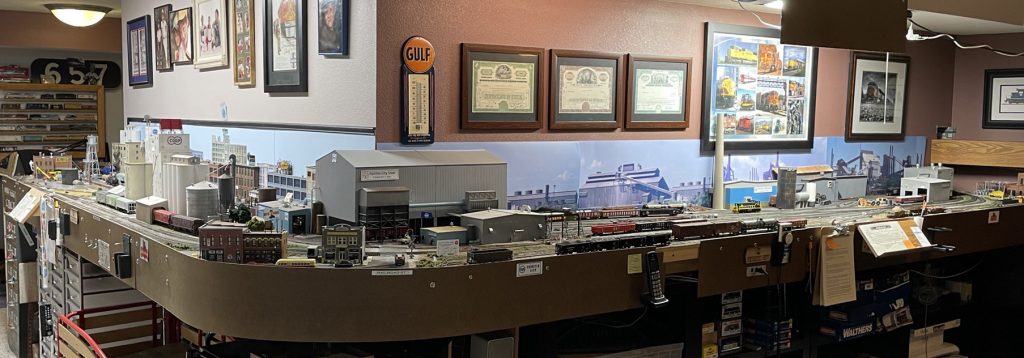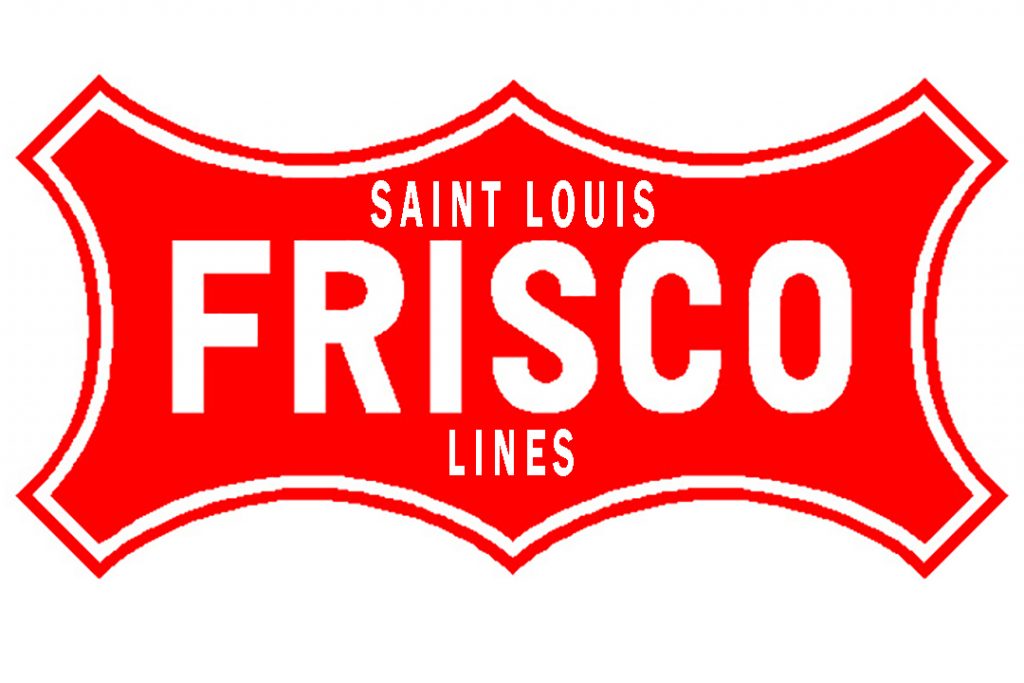
LAYOUT FACTS
Saint Louis Lines is an HO-scale model railroad featuring operations of the Missouri Pacific (MoPac) and St. Louis-San Francisco (Frisco) within the Saint Louis area during the late nineteen-seventies. Other railroads on the layout interchange mostly with the Frisco at Lindenwood Yard – these include the Terminal Railroad Association (TRRA), Norfolk & Western (N&W), Alton & Southern (A&S), Missouri-Kansas Texas (Katy), Southern (SOU), and the fictitious Calico & Turpin Springs (C&TS) railroads.
Construction of the original Eagle River Division began in November of 2008. In August 2023 operations were reconfigured and location names changed to represent the Saint Louis area of the nineteen-seventies. The current layout is spread between two rooms and was constructed with wide aisles to comfortably accommodate operators and visitors.
Part of the layout is a double deck design, and other parts are single level. The ruling grade is 2.2%. There is no helix.
Lenz Digital Command Control is used to power the layout, train detection in blocks, and turnout control. CTI Electronics products and networked Arduinos share in controlling signals. All systems interface with a computer running Java Model Railroad Interface (JMRI). Most locomotives are sound-equipped, using mix of Train Control Systems, Soundtraxx, and LokSound decoders. Additional sound effects are located around the layout to provide ambience. Besides signals. networked Arduinos perform other layout functions including controlling track power in staging yards, monitoring lift-out bridge status, and track occupancy.
Lighting is primarily provided by daylight-balanced LEDs.
TRAIN OPERATIONS
A large staging area at one end of the layout also provides a loop for turning trains. There is a division classification yard at the other end, also with a loop for turning trains. A couple of branch lines terminate in staging tracks. One branch terminates with a classification yard and car float operation. A vintage computer-simulated centralized traffic control system (CTC) controls signals and routes, and is used to manage all mainline traffic. Crews communicate between the dispatcher and yardmaster using a dedicated wireless telephone system.
JMRI OperationsPro is used for car forwarding, with some manifests and switch lists generated live during an operating session. MR SLAM FORMATTER is used to format and print PDF manifests and switch lists.
For a full operating session, 6-8 operators are needed. There are local trains, coal manifests, mixed freights and yard transfers transporting grain, cement, farm machinery, trailers, beer, and many other commodities.
ABOUT THE COONSKINS & BUZZSAWS
Frisco’s logo was inspired by a coonskin tacked to the side of a station.

Missouri Pacific’s logo going into the nineteen-seventies was known as the MoPac buzzsaw.




